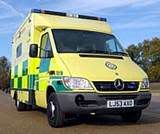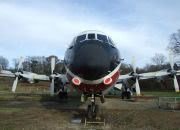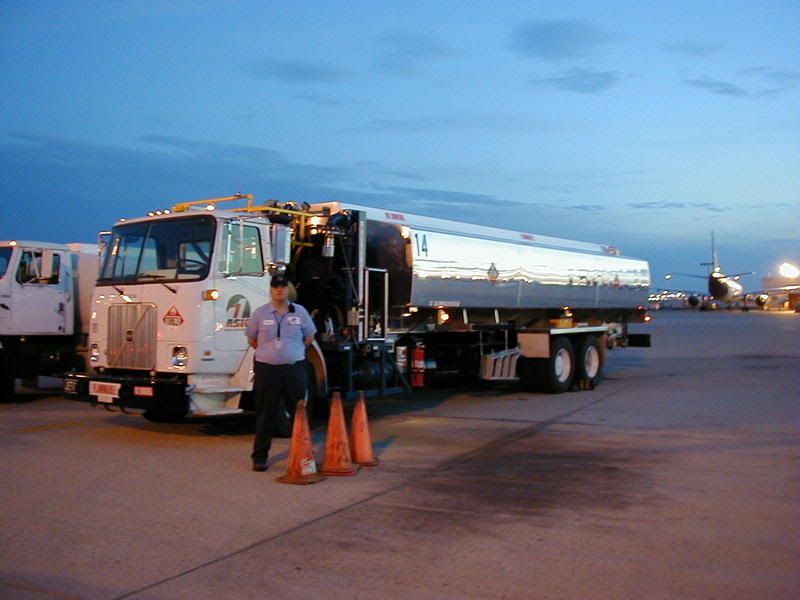Techy111 wrote:No i start to bog down a bit.....I am learning how to use an FMC and am confused to the point where i haven't the foggiest...?
I hear on my DVD's the pilots refer to V-Nav and L-Nav which confuses the hell out of me...so i was wondering if one of you kind souls can put it in layman terms for me please...?
I understand it refers to the A/P but thats where my knowledge stops.....I understand QFE , QNH and millibars and flight levels and all things ATC as i was an ATSA2 but i want to do things in the cockpit correctly.....Thanks in advance...

And does anyone know of a good tutorial for "intercepting the glideslope" please.....?
Tony
Let's see how little I can help and Leif can fill in the blanks...

LNAV stands for Lateral Navigation. This is a mode where the INS, IRS, GPS, FMC, FMS, etc. (aka Remote Navigation or RNAV equipment), drives the heading functions of the autopilot. In this mode, the RNAV equipment can fly the airplane from one waypoint to another along a pre-loaded flightplan or to intercept and follow an imaginary localizer in an RNAV approach.
VNAV stands for Vertical Navigation. This is a mode where the RNAV equipment drives the altitude-related functions of the autopilot. This includes being able to command profile climbs and descents along with driving the autothrottle modes to fly a pre-loaded profile in the system. This allows for automatic descents or climbs and speed changes to follow a published arrival or departure procedure for example or to intercept and follow an imaginary glideslope in an RNAV approach.
With both functions engaged, you can basically have the airplane fly itself from the time you engage the autopilot until you disengage it for touchdown. FSNav recreates the LNAV and VNAV functions as part of it's inbuilt autopilot (the whole "Fly Flightplan" button, modes, and options thing).
As for intercepting an ILS, generally you want to setup about 15 miles from touchdown and 2000 feet above the field elevation on a heading that is 30 degrees off the localizer course (i.e. for a localizer on a heading of 090 you want to intercept at a heading of either 060 if coming from the south or 120 if coming from the north) and about 50 knots over your final approach speed. The moment that the localizer bar begins moving, immediately turn into a standard rate turn onto thel localizer course. If you do it properly, you should roll out on the localizer. Follow the localizer at your altitude until such time as the glideslope needle or bar begins to move. When it does, begin slowing to your final approach speed plus 10 knots. When the needle/bar is 1 dot above the center of the scale, lower your landing gear and final notch of flaps. Then follow the glideslope and localizer to the runway. When at 100 feet AGL, slow to your final approach speed and try to take the throttle to idle somewhere around 20-50 feet above the runway.
If you have the ILS charts for a given runway, it makes life much easier as it will typically have all the altitudes and intercept points laid out for you so you can fly the procedure published and it will ensure that you're at the right altitude to intercept the glideslope with plenty of time to get stabilized.
I know some people here will complain about me using 30 degrees instead of 45. The reason I use 30 is because unless you're using the autopilot, you will fly through the localizer. I've tried it dozens of times in sim and real life, and it's always been the same with anything over a light single. You are simply moving too fast to be able to intercept the localizer without going through it using only a standard-rate turn (which legally is the most you can do when on an ILS because the presumption is that you're doing it because you're not looking out the window and you have to be predictable for ATC). I've talked to many other pilots, and they agree. Unless the autopilot is flying the approach, you will always blow through the localizer. If you blow the LOC in the real world, you'll get taken around again 99% of the time and occasionally you'll be given a number to call on the ground because you blew separation minimums for the aircraft on a parallel approach causing both of you to have to try again and really making ATC mad.














